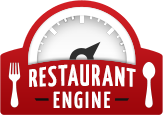Forward Expectations for Restaurant Employment
Over 36 million Americans have lost their jobs since February. According to April data from the U.S. Bureau of Labor Statistics, the unemployment rate was 14.7% two weeks ago. This morning, Joseph Stiglitz, Nobel Prize-winning economist at Columbia University, claimed unambiguously, “we are going toward an unemployment rate of at least 25%.” Although dire, the President of the Federal Reserve Bank of St. Louis did previously admit that unemployment could exceed 30%.
Prior to the coronavirus pandemic, there were a total 15.6 million restaurant and foodservice workers in the U.S., of which eating and drinking places employed 12 million. As of the end of April, approximately eight million of those workers had been fired or furloughed.
Fortunately, restaurants’ worst levels of unemployment have now passed. Governors in 28 states currently allow full-service restaurant operations. During the trough of the crisis, sales at restaurants declined -26% to -55% to -61% to as much as -89%.
Live on television this morning, Stiglitz explained his assessment of the employment situation, “If we stimulate economic demand enough, then of course the market will create the jobs. But I also want to emphasize that we are going through a structural change in which the service sector naturally turns to the government. Part of the structural change is that the companies who were at the edge have gone off the edge. I’m talking about brick and mortar. So we’ll have a less vibrant economy going forward.”
On the topic of the unemployment rate, “I quite frankly am rather pessimistic,” continued Stiglitz. “The uncertainty associated with the pandemic is not likely to go away. We could be very lucky — we could get the vaccine very quickly that goes into mass production — but as long as there is uncertainty hanging over us, that combined with the devastation to household balance sheets, that is going to mean that aggregate demand is going to remain low, unless we are going to have adequate government support.” Coincidentally, U.S. markets opened 2.7% higher this morning after Boston-based Moderna released positive clinical results from its experimental COVID-19 vaccine.
Many restaurant owners are surviving on bridge credit facilities, rent and mortgage forbearance, and CARES Act stimulus programs like the Paycheck Protection Program. For Stiglitz, he foresees a continued problem of “structurally lower margins,” referring to the thin profit margins of most restaurants that have been reduced to mere single digit percentage of revenue. Stiglitz explained, “The issue on margins is more related to the problem of competition. That’s a problem that has been deep-seeded in our economy for a couple of decades. I’ve talked about monopoly power, and this crisis is just going to exacerbate the pricing power of monopolies. The behemoths are going to have even more market power.”
A National Restaurant Association poll of 6,500 restaurants predicted that total foodservice industry losses will exceed $240 billion this year. Nationwide, “2020 as a whole is going to be a negative year,” according to Federal Reserve Bank of San Francisco President Mary Daly.
Photo by Louis Hansel @shotsoflouis on Unsplash



Leave a Reply